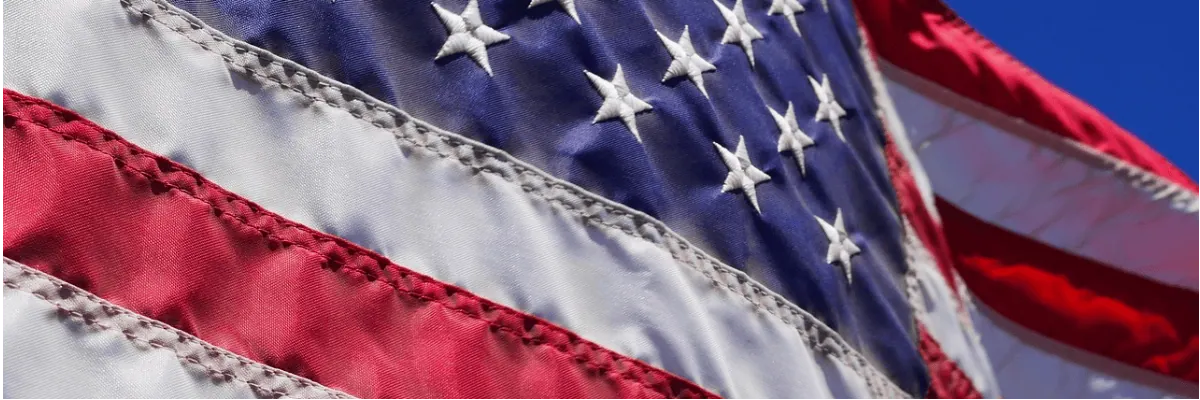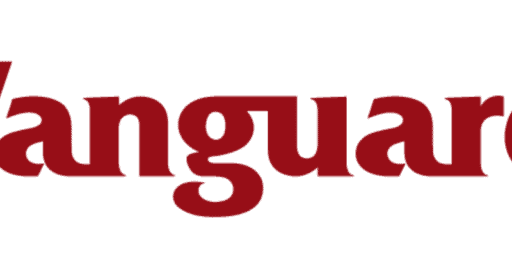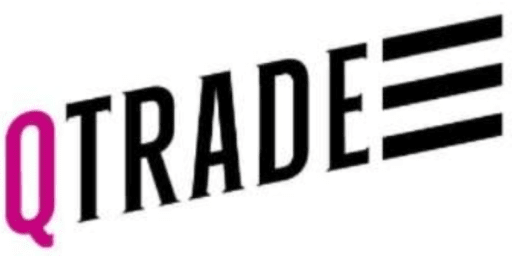Trump, Tariffs, and the Canadian Economy
Here we go again… the Trump economy rollercoaster is full speed ahead. Many Canadians are anxiously glancing at their portfolios and trying to parse the ramblings coming from Trump world in order figure out what it all means for their investments.
Before we get too deep into the specifics, I wanted to point out that Mike Heroux is hosting a live webinar this Thursday, November 21st. Click here for more information and to make sure you don’t miss it. He’s titled the webinar: Trump, Tariffs, and Trends for Canadian Investors – and Mike has said he’ll answer any questions you can throw at him live in the webinar.
Here’s a high-level look at where we stand today.
2024 Stock Market in Canada and the USA
- The S&P/TSX Composite Index for Canadian stocks hit 25,000 for the first time this week, and is up nearly 20% year-to-date.
- The S&P 500 index zoomed past 6,000 earlier this week before now falling back to 5,870 – still good for close to a 24% gain this year, and a scorching 88% over the last 5 years.
- The Nasdaq 100 index has left 20,000 in the dust and is up 23% in 2024.
- Both American and Canadian unemployment rates are very low relative to their long-term average, and inflation is now in the target range for both countries.
Markets have surged since it became apparent that not only would there not be civil unrest in the USA as a result of the election, but that it would also be the most business-friendly administration in several decades. Share prices gave back some of those gains at the end of the week, but surveys of investment enthusiasm are off the charts at the moment.
It should be noted that the S&P 500’s forward price to earnings ratio is close to 24x. That’s relatively high over the last 50+ years, but only about average over the last two decades. It’s also substantially lower than the market peaks in 2002 and 2021. It’s also WAY lower than the eye watering 124x mark that was hit in 2008/2009.
The Canadian stock market has a current P/E ratio of about 19.5x and a forward P/E ratio of about 15x. These are both slightly higher than long-term averages as well, but are lower than the recent 2020 and 2021 peaks.
All of that to basically say: We’re definitely in a “Goldilocks Zone” at the moment where everyone is feeling great and willing to pay a lot of money to own shares of companies!
Trump’s Economic Policies
So what is Trump about to do when it comes to moves that will affect the world’s economy and (maybe more importantly) your personal bottom line?
Well… there is what he says he is going to do… and then there is what he will actually do.
Here is what he says he will do:
- Massive tariffs on Chinese goods ranging from 50% to infinity (the number keeps increasing).
- 10-20% tariffs on goods coming into the USA from any other country in the world (including Canada).
- Historically insane debt levels caused by cutting a ton of taxes on all sorts of things (corporate profits, social security payments, tips, etc) and not cutting much on the spending side.
- Encourage fossil fuel production through cutting regulations.
- Encourage mergers and acquisitions through cutting regulations and making it easier for banks to take big risks.
- Encourage cryptocurrency prices to go up by magic, pixie dust, and talking about it a lot.
Tariffs and Canadian Stocks
It’s important to remember that the economy and the stock market are not the same thing. In many ways, I think Trump’s tariffs (should they come to pass) will have a much larger effect on mid-sized Canadian companies that disproportionately sell products to the USA than they will on the massive companies in the TSX 60.
It might be worth quickly going over what exactly a tariff is again.
You know when you come back from a shopping trip in the USA (or any other country) and the border officer asks what you purchased abroad? Then sometimes they make you come in and “pay duty”?
Well, the amount of “duty” you pay is not random at all. That money you’re paying to the Canadian Border Services Agency is the result of tariffs that Canada has put on goods that are not made within our country.
Different types of goods coming from various countries all have different types of tariff rates applied to them – and the border guards have no idea what they are on most things until they type them into the computer. I know this, because I was one of those jerks kind-hearted civil servants at the border for several years. Tariffs are incredibly confusing for everyone involved and a real pain point in economic growth.
Now imagine that process you go through individually at the border – but apply it to the massive scale of all the shipping containers that come in and out of the USA and Canada every day. Most people don’t realize there are tariffs on these shipping containers because they only pay the final price in the store. BUT – what has happened before the product hit that shelf is that the company was forced to pay the Canadian government a bunch of money in order to bring that product into Canada. So, of course, they then had to raise the price of that product to get their money back – which you in turn paid.
So you definitely paid for that tariff – you just probably didn’t realize it. It’s basically a hidden tax. Depending on the product, the company may take a small hit to their profit margin, and then pass along the rest of the tariff cost to you (the consumer), but most of the time you end up paying the vast majority of the tariff.
Rational people who understand how basic economics work (and can read more than 140 characters at a time) know that tariffs are an awful idea. They create all sorts of issues for supply chains, and they make products more expensive in a myriad of ways.
Think about how many countries generate parts for the average car or airplane. Those products might be manufactured in the USA, but parts come from all over the world. The car maker now has to pay a team to navigate these tariffs, pay the actual tariffs, re-constitute their supply chain – and all that adds up to a more expensive car at the end of the day. Countries that don’t have tariffs will now make cheaper cars than the USA.
The Tax Policy Center and Peterson Institute for International Economics predicts the typical U.S. household would pay about $3,000 more per year if Trump were to enact a 20% worldwide tariff, combined with a 60% tariff on Chinese goods.
How do you like dem inflation apples?
So – Will U.S Tariffs Hurt Canadian Stocks?
Honestly, it will likely be a case-by-case basis.
For example, I think it’s a pretty good bet that Canadian oil and natural gas will continue to flow to the USA tariff-free. Trump’s voters are very price-sensitive to gasoline prices, and rising prices at the pumps would be an easy political win for his adversaries. That – and the fact his new National Security Advisor is married to the vice president for TC Energy Corp seem to me to take those stocks off the table. You can take a look at our list of best energy stocks if you agree with my estimation.
It’s also worth mentioning that there would be some degree of positive spin-offs for Canada that would be happening at the same time as the tariffs take a bite out of our US exports. For example, if the US consumer is flush with cash due to the massive budget deficit Trump is likely to run, then they’re going to buy a lot more Canadian stuff – even if there are tariffs.
Also, depending on how the various types of tariff rates shake out, some degree of manufacturing or sourcing of raw materials could be transferred from other countries like Mexico or Vietnam to Canada. This scenario could occur if we’re able to avoid a tariff war with the USA, but other countries aren’t.
Trump Tariffs and the USMCA (former NAFTA)
Now, if you’re wondering why in the world tariffs have suddenly become so important, it’s because most developed countries around the world have these things called trade agreements. They generally say something like, “Hey, aside from a few exceptions here and there, we promise we will not put tariffs on each other’s goods.”
For most of us, the free trade agreement between Canada, the USA, and Mexico will always be known as NAFTA. But officially, thanks to Trump’s last term in office the free trade agreement between the three major countries in North America is known as the United States-Mexico-Canada Agreement (USMCA).
The USMCA was negotiated by Trump’s team, so unlike the former NAFTA (which Trump called the worst agreement of all time – before changing things around the edges and now calling it the greatest trade agreement of all time) Trump can’t blame anyone else for what’s in this agreement.
The USMCA is pretty explicit in saying there are to be no tariffs applied. BUT – the agreement is set to be renegotiated in 2026. (Anyone want to be when they initially set that date they never dreamt they’d be dealing with a Trump government.)
So what it comes down to when we look at how much the Trump tariffs will actually affect the Canadian economy is how deep those tariffs are (5% is much different than 20%) and how widely they are applied. (Is it the promised 10-20% on “everything” – or is only on a select few sectors like lumber, aluminum, etc.)
If I had to bet, I’d say there is a very good chance that inflation is going to put a ceiling on just how much of these tariffs are going to be put into place. China appears to be target #1. Mexico appears to be target #2. East Asian countries like Taiwan, South Korea, and Vietnam all have bigger trade surpluses with the USA than Canada does, so they’re likely to be in the crosshairs as well.
Once Trump tariffs all those imported goods, plus does all of this deficit-fuelled tax decreases, plus deports a bunch of the US workforce, I think inflation is going to be on the way back to 4%+ again, and there will be substantial pressure to scale back his tariff aims on secondary targets like Canada.
Plus, it’s not like Canadian politicians of all stripes are unaware of how important that US market access is to Canadian companies. Doug Ford and Chrystia Freeland have already started making noise about how Mexico is the real problem in the USMCA, and look how good we have been in regards to keeping Chinese vehicles out of North America – oh and we could probably spend some more on military, etc.
Is Trump Good or Bad for the Canadian Dollar?
There’s also the issue of the Canadian Dollar. It’s important to remember that while most Canadians only think of the CAD in relation to the United States Dollar (USD), our currency exchange rate floats against other world currencies as well.
For example, we’re right at the same place against the Euro as we started the year, and we’re actually doing better against the British Pound Sterling and the Japanese Yen.
So, while we’re down against the USD (and falling) that really says more about the strength of the USD than it does weakness in the CAD.
Right now, the US bond market is essentially telling all of us that it thinks rates are going to stay higher for longer than we previously anticipated. That’s likely due to trying to price in the massive amount of borrowing Trump wants to do, combined with his inflationary policies.
Those higher rates are leading more people to keep money in USD. Meanwhile Canada (along with most countries in the developed world) is now much more worried about recession or much-reduced growth than they are inflation. Consequently, they’re cutting interest rates, and there doesn’t appear to be a lot of pressure to stop that price-cutting momentum.
If those trends continue, the Canadian Dollar will continue to go down vs the USD. While this would help defeat any effect of Trump tariffs in terms of exporting goods and services to the USA, it would obviously be bad for Canadians taking winter holidays or shopping trips down south.
Why is Tesla and Bitcoin Going Up? (Plus US Banks, Space X, and DJT)
Some other questions that I saw popping up in regards to Trump were the stock prices of Tesla and US Banks, as well as cryptocurrencies like Bitcoin. Here’s the basic reasoning behind some of these moves:
Tesla: Sure, Republicans hate electric vehicles – but they love Elon Musk. Musk appears to have unlimited access to Trump, and shareholders appear to be betting that will be enough to somehow make Tesla a lot of money. The stock is up 30% since election day.
Trump and Bitcoin: Trump famously hated Bitcoin and thought it was a scam in his first Presidential term. Turns out that hundreds of millions in campaign donations can change a person’s mind pretty quickly. His government has promised to take off a lot of regulations that were put on the industry.
It’s worth noting that those regulations were put in place a few years ago when the majority of American cryptocurrency companies went bankrupt and/or stole a bunch of money from people. What could go wrong? We are generally against investing in crypto, you can read our guide to investing in bitcoin to see why.
US Banks: Regional US banks (and to a lesser degree, the big banks too) shot up after the scale of the Republican win became apparent. This is largely due to the promise of removing banking regulations. Again, worth noting most of those rules were set up to avoid a 2008-style meltdown again. Until something bad happens, the US banks will almost assuredly make more money. Canadian banks that own major US assets should benefit from this lack of oversight. (TD must be wondering why this regulation-cutting couldn’t have happened a few months earlier.)
Trump Media & Technology Group Corp. (DJT/NASDAQ): The company behind Truth Social (Trump’s social media app) and it has yet to ever make a profit. In fact it has lost tens of millions of dollars and declared about a million dollars in revenue last quarter. Yet somehow Trump fans have decided that this is their meme stock.
The current value of the company is about USD$6 billion, despite not having any sort of legitimate path to making money as a company. Speculation abounds that perhaps Musk’s Twitter will simply buy the company for $6 billion+, or maybe an oil-rich country might purchase the shares. Remember when we decided that George W. Bush owning a baseball team was a conflict of interest?!!
SpaceX: Perhaps the most interesting (and least talked about) investment that has went up since Trump was elected is an ETF that has invested in Musk’s SpaceX. I have to admit that I find SpaceX – and its Starlink subsidiary – fascinating companies with incredible technologies. What Musk and his team have been able to do through this company is essentially magic to me, since I have no comprehension of the physics problems that needed to be solved to bring this technology into being.
Right now SpaceX does not have any shares listed on a stock exchange, as it’s a private company. So we don’t know how valuable it is. Most estimates place it around $200 billion. Many experts think that the government contracts for SpaceX will be by far the biggest favour Musk will ask of Trump.
Because it’s impossible to purchase SpaceX shares, it’s very difficult for the average everyday investor to get exposure to this company. One of the few ways is through the ETF called Destiny Tech100 (DXYZ). This relatively small ETF has bought shares in 22 private technology companies. Space X is a little more than a third of the overall ETF’s holdings (with companies like Open AI making up the balance). DXYZ was up nearly 40% one day after the election, and has tripled in the last couple of months.
For more information, read these guides about Canadian ETFs for U.S equity, and comparing the Canadian and the U.S stock markets.
Final Impact of Trump on Canadian Portfolios?
Ultimately, I think anyone that tells you they know for sure what Trump will do in regard to Canadian companies is probably not worth trusting. I am very skeptical that Trump will be able to put tariffs in place on most of the big Canadian companies that make up the TSX 60. Banks and utilities provide services to the USA – no tariffs to worry about there. As I stated above, I think energy stocks are safe, and that inflation pressures will kill a lot of tariff momentum.
So maybe we’re looking at an impact on a few Canadian manufacturing and mining stocks?
Even that impact may be offset by the increase in the overall market size of our largest trading partner and/or the fact our currency is going down vs the USD.
That’s just my two cents. Don’t forget to register for the free Webinar: Trump, Tariffs, and Trends for Canadian Investors that we’re putting together for MDJ readers this Thursday, November 21st. Click here to make sure you reserve a free spot – and come ready to ask Mike any questions. His focus will specifically be on US policy changes that could affect Canadian dividend stocks, so make sure to tune in if Canadian dividends are a key part of your portfolio strategy.
I've Completed My Million Dollar Journey. Let Me Guide You Through Yours!
Sign up below to get a copy of our free eBook: Can I Retire Yet?










